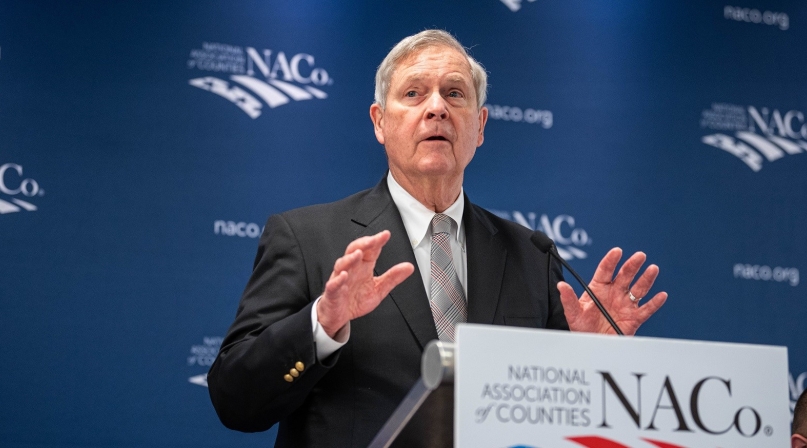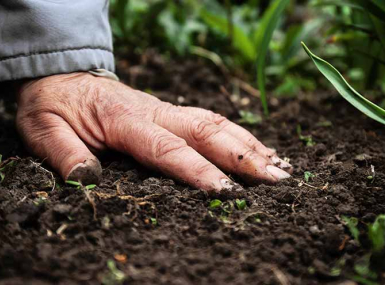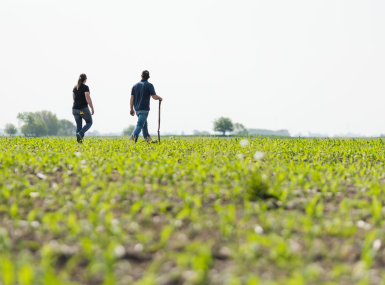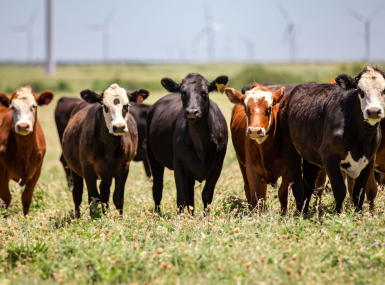Economic opportunity awaits rural and urban farmers, says USDA Sec. Vilsack

Key Takeaways
Agriculture is experiencing a transformative moment that could see new creative opportunities for rural and urban farmers alike, according to Agriculture Sec. Tom Vilsack, who stopped by the NACo Board meeting Sunday just hours before the Super Bowl.
“You know, it doesn’t surprise me that NACo would meet on Super Bowl Sunday, it just shows how truly dedicated you are to the cause,” he said.
Speaking to a packed conference room at the Legislative Conference, Vilsack told county officials that agriculture is experiencing both a “transformative and challenging” time.
Learn more
NACo 2023 Legislative Conference coverage
Torres Small: Record numbers don’t tell the whole story for U.S. agriculture
Over the last few years, farmers have seen their highest income ever. “But as Paul Harvey said, ‘Here’s the rest of the story,’” he said. “Nearly 50 percent of America’s farmers lost money. Another 40 percent did make a little money, but the majority of their money came from ‘off farming.’” Off farming is any activity undertaken by the farmer or farm household as an additional source of income.
Over the past 60 years, dating back to former USDA Sec. Earl Butz, farming has “been about production,” Vilsack said. “Farms have gotten bigger and bigger,” he said, “and we have fewer and fewer farmers. That just doesn’t impact agriculture, it impacts small businesses in small towns because there are fewer customers. It impacts the public-school systems, because there are fewer students and it impacts the healthcare system because there aren’t sufficient numbers of people to support a full-scale hospital.”
So, the challenge, he said, is to “make sure we figure out ways to transform the model we’ve been operating under the last 60 years.”
To do that, it requires looking at new and creative ways for farmers to make a living, he noted. Today, farming choices are mainly growing crops and livestock.
But due to recent legislative achievements, Vilsack noted, farmers can diversify. “Economic opportunity awaits both rural and urban farmers.”
USDA is committed to supporting a diverse range of farmers, ranchers, and private forest landowners through a program called Partnerships for Climate-Smart Commodities, he said. The effort will expand markets for America’s climate-smart commodities, leverage greenhouse gas benefits of climate-smart commodity production and provide direct, meaningful benefits to production agriculture, including for small and underserved producers.
This effort will expand markets for America’s climate-smart commodities, leverage the greenhouse gas benefits of climate-smart commodity production and provide direct, meaningful benefits to production agriculture, including for small and underserved producers.
USDA is investing more than $3.1 billion for 141 projects through this effort and all of the projects that will be funded require meaningful involvement of small and underserved producers.
Last fall, Vilsack announced USDA would invest up to $2.8 billion in 70 selected projects under the first pool of the Partnerships for Climate-Smart Commodities funding opportunity. In December, he announced $325 million will be invested in an additional 71 projects under the second funding pool.
Another opportunity Vilsack discussed is the Farm to School program. “For example, we recently invested $10 million in a series of grants that actually went to 5,000 schools across the United States to help them purchase, and to know how to purchase. locally produced foods. So that's 5,000 new opportunities that didn't exist.”
“So it's an exciting new world,” Vilsack said, “which is why I asked for the opportunity to speak briefly to you today. To encourage you to whet your appetite. To learn more about this. All of this information is on our website, at USDA.gov. And we encourage you to do this and all of it requires an understanding of two things. And I'll finish with this — it's important for us to continue to have the resources that are currently available to us in the infrastructure law, in the American Rescue Plan, in the Inflation Reduction Act.
“Now there may be an effort on the part of some folks to basically take back some of those resources,” Vilsack warned. “If they take it from us at USDA, they are limiting our capacity to transform agriculture. Secondly, as we put the farm bill together, it's going to be important for these programs that are now being launched, and this administration to be supported and integrated into that farm bill, so that they become part of the fabric of what USDA does on a regular basis.
“If we do this, here's what happens,” he said. “Farming improves, not for a few. But for many.”
Attachments
Related News

U.S. Department of Agriculture unveils $700 million for regenerative agriculture
On December 10, U.S. Secretary of Agriculture Brooke Rollins announced the launch of a $700 million pilot program to support regenerative agriculture practices across the country.

White House and U.S. Department of Agriculture announce $12 billion in aid to farmers
On December 8, President Trump and U.S. Secretary of Agriculture Brooke Rollins announced a $12 billion farm aid package to help farmers manage market disruptions and rising production costs.

U.S. Department of Agriculture releases plan to strengthen beef industry
On October 22, the U.S. Department of Agriculture (USDA) announced its plan in a white paper to stabilize and strengthen the nation’s beef industry. USDA’s white paper lays out a long-term strategy that aims to reverse these trends by improving the resilience of the domestic beef industry, increasing consumer access to American beef products and boosting demand
